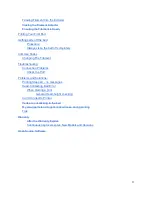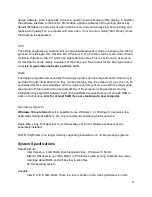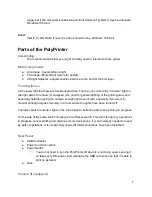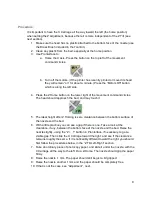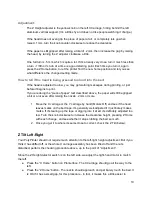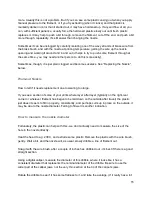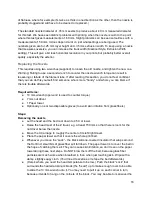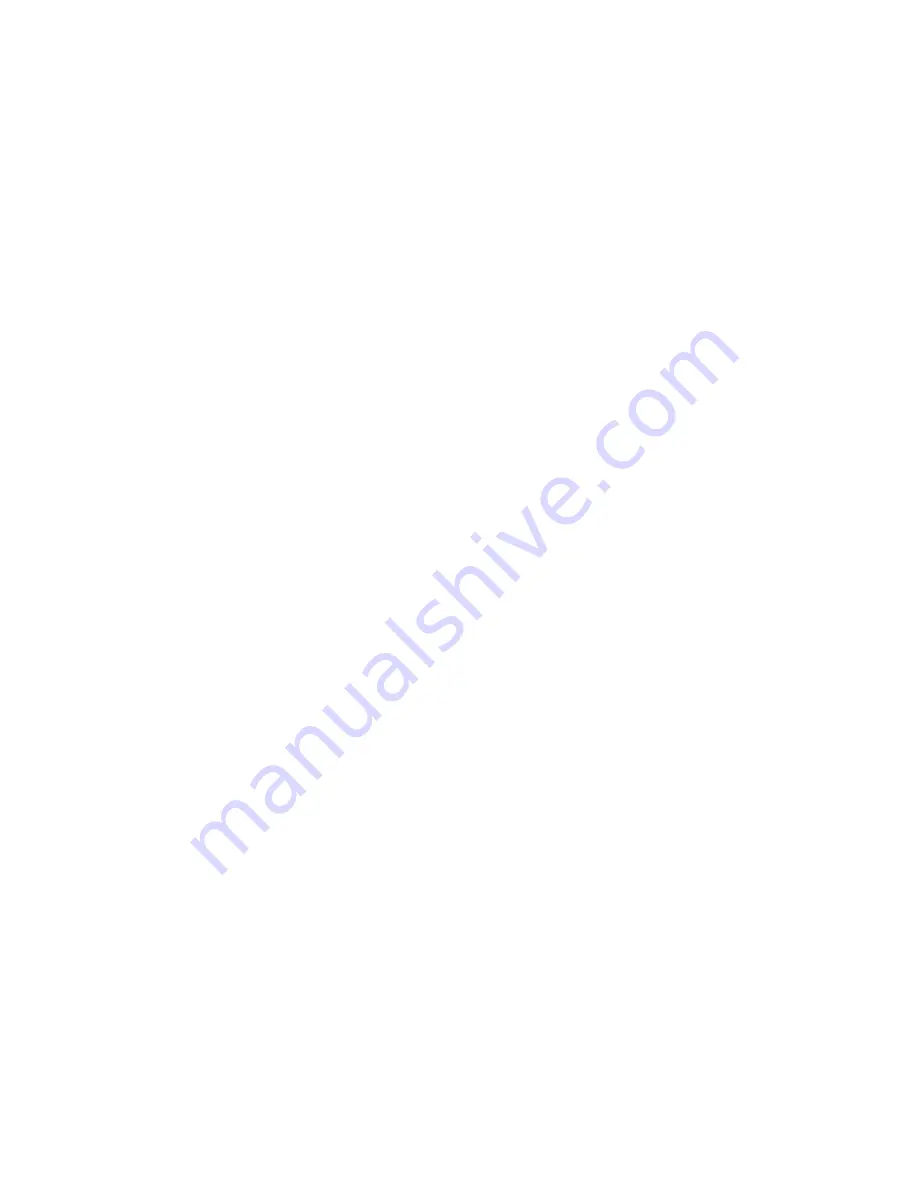
more. Usually this is not a problem. But if you can see some plastic oozing out when you apply
manual pressure to the filament, or if you try extruding (when it clunks) and that plastic is
markedly darker in color than it started out, it may have hardened up. If any will flow at all, you
can, with sufficient patience, usually force the hardened plastic slowly out until fresh plastic
replaces it. It may help to push a bit through, remove the filament, cut off the end, and push a bit
more through, repeatedly. It’s still easier than changing the nozzle.
Sometimes it can be unclogged by carefully isolating one of the wavy strands of brass wire from
the brass brush, and with the nozzle at printing temperature, getting the wire up the nozzle
opening and working it around and in and out (it helps to try to push some filament through at
the same time - you may need another person to do this more easily).
Sometimes, though, it is just plain clogged and becomes useless. See “Replacing the Nozzle”,
below.
Worn-out Nozzle
How to tell if it needs replacement due to wearing too large:
If you see a section of some of your prints where layer after layer (typically on the right-rear
corner or wherever filament has begun to be laid down on the outside after travel) the plastic
just doesn’t seem to fill in properly, consistently, and perhaps curls up in place on the outside, it
may be due to the nozzle diameter. Failing to fill well is another indication.
How to measure the nozzle diameter
Fortunately, the plastic can help with this - we don’t actually need to measure the size of the
hole in the nozzle directly.
Heat the head to e.g. 230 C, and extrude some plastic. Remove the plastic with the wire brush,
gently. Wait a bit, and the nozzle will, as usual, slowly dribble a line of filament out.
Snag it with the wire brush, after a couple of inches has dribbled out - it’s best if there is a good
straight section.
Using a digital caliper, measure the diameter of this dribble, where it looks like it has a
consistent diameter that represents the nominal diameter of the dribble. Be sure to use the
wider part of the caliper jaws, not the very thin section at the tip of the caliper’s jaws.
Rotate the dribble to see if it has some flatness to it, and take the average. (If it really has a lot
15



